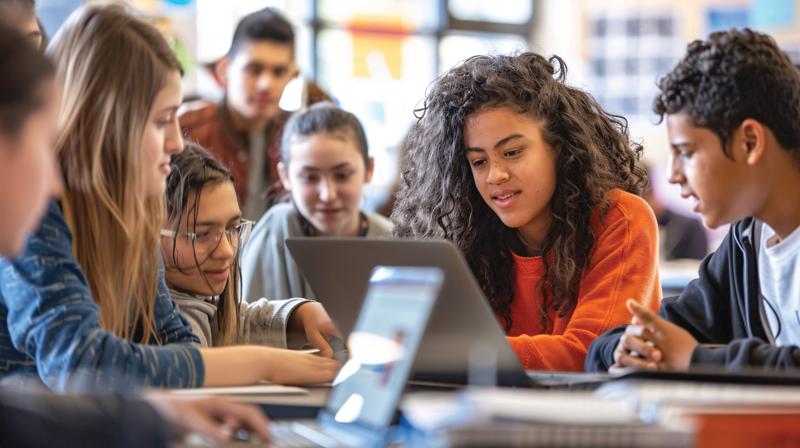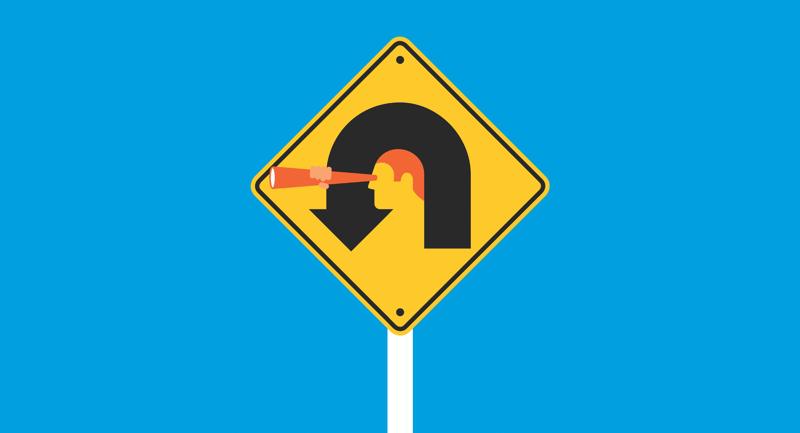A math teacher stares at her laptop screen, watching real-time data flow in as her students work through a collaborative problem-solving activity. Instead of waiting weeks for the results or downloading a static PDF report, she can see immediately which students are grasping proportional reasoning and which need support. The assessment system she’s using isn’t just measuring what students lack; it’s revealing the individual skills they are using and the sophisticated thinking they bring from prior classes.
This scene represents what should be expected of the assessment process—that it supports teaching and learning. The traditional bubble sheet, even if computerized, is a relic of the past. In its place, there is an evolution in assessment that is quietly unfolding in schools today.
This evolution can transform how we understand and measure student learning. It offers educators unprecedented opportunities to create assessments that provide actionable insights, engage learners authentically, and illuminate each student’s unique learning journey. We are at a choice point: If we can envision a future where assessment is not a gatekeeper but a launchpad for learning, we can build systems that are more efficient, effective, and better aligned with the needs of today’s learners and maximize the potential students possess. Turning this vision into reality starts with confronting the limits of traditional assessment and understanding what a more innovative assessment model can look like.
At Assessment for Good (AFG), a six-year initiative at the Advanced Education Research and Development Fund (AERDF), we have seen that traditional assessments—especially high-stakes, one-size-fits-all approaches—are inadequate in truly supporting learning. (See our interactive report at https://futureofassessment.org.) Traditional assessments typically provide narrow snapshots of achievement that arrive infrequently (and often too late) and lack information on how to support educators in the numerous instructional decisions they make each day. Moreover, research consistently shows that dependence on standardized testing narrows curriculum, as “teaching to the test” becomes standard practice, devalues teacher professionalism, and warps public perception of school quality by reducing evaluation to a few data points (Feder, 2023). Because it measures isolated skills in artificial contexts, traditional assessment fails to honor the diverse strengths students bring to learning or provide the timely feedback necessary for responsive teaching.
This last year has seen many organizations call for a reimagining of the future of assessment. ISTE+ASCD’s Transformational Learning Principles emphasize that educators must “facilitate authentic performance-based projects and assessments that elevate students’ roles as designers, creators, collaborators, and problem solvers” (ISTE+ASCD, 2025). Other organizations, including Education First and Center for Assessment, have launched initiatives that call for a fundamental shift from traditional testing to assessments that better reflect learners’ unique strengths and provide an authentic understanding of how they are learning. The vision is clear: Assessment must move from sorting and ranking students to supporting and empowering them.
Innovative Assessment Is Tech-Powered
The rapid advancement of artificial intelligence (AI) has opened unprecedented possibilities for assessment innovation. The AI in education market, valued at $5.88 billion in 2024 and projected to reach $8.30 billion by 2025, is transforming how students and teachers interact with assessment technology (Qadir, 2025). AI-powered assessment systems can now provide what educators have long wished for: continuous, adaptive measurement that responds to individual learning patterns in the moment.
Assessment for Good has been examining how new technological approaches in assessment, including AI, can marry competencies like metacognition, engagement, and executive function with core knowledge to enable advanced, powerful learning. At AFG, we have thought deeply about how to use AI-augmented processes both to increase efficiency and to improve the learning sciences so that educators have more effective assessment tools, not just more efficient ones.
Over the last year, we have been testing an AI-powered assessment design process in a new version of five of our strongest assessments. To make sure we matched effectiveness with efficiency, we explored how to generate new strengths-based assessment questions that were rooted in our research-informed, collaboratively designed learning framework, Power Skills for Learning. This meant that we trained our in-house generative models to recognize the underlying learning science in our Power Skills for Learning framework and use that as the foundation for our assessment design. This new automated approach led to assessment questions with the same or increased effectiveness as our human-powered processes. As a result, we were able to expand our pool of relevant assessment items by 167 percent in one-third of the time it previously took, while maintaining quality and alignment.
The ability to generate high-quality assessments quickly and at scale points to a future where assessments can be rapidly customized for individual learners, tailored to specific contexts, and aligned with the latest developmental research—creating truly personalized learning pathways. Most significantly, these technological advances enable analytical approaches that can make sense of complex, dynamic learning processes rather than reducing student performance to simple scores.
The vision is clear: Assessment must move from sorting and ranking students to supporting and empowering them.
Innovative Assessment Is Timely
One of the most significant advantages of technology-enhanced assessment is its ability to deliver immediate, actionable feedback. Real-time assessment supports a more formative approach by allowing on-the-spot adjustments to learning.
As an example, online polling tools, such as Kahoot! and Poll Everywhere, have enabled educators to create interactive quizzes and polls that engage students and provide feedback, often displaying results instantly and allowing educators to address misconceptions immediately (Team Varthana, 2023). This timeliness allows educators to expand their instructional toolkits to include formative assessment in a more meaningful way.
At AFG, we believe that bringing assessment and learning together in a more supportive, symbiotic process is key to the future of learning. New Insights, for example, is an assessment platform from Oluko Learning, an organization that designs tools for immediate data, where learners and educators can get timely, standards-aligned information on key skills that can support learning moments throughout the day. Instead of assuming that learning and assessment should be bound by a single content area, New Insights takes the Power Skills for Learning framework and transforms it into a comprehensive information hub that gives educators a timely picture of where students are in nearly 30 foundational skills across content areas. Its insights engine also provides a recommendation of what strategies an educator can use to lock in those skills or accelerate them through enrichment individually, in small groups, or at the class level.
Innovative Assessment Is Authentic
Modern learning approaches recognize that students should chart their own course in learning, and that includes creating authentic and practical assessments. While real-time tools improve the timing and responsiveness of assessment, they’re even more powerful when paired with tasks that reflect the real-world complexity of student thinking.
Authentic assessments are realistic, engage students in higher-order thinking and application, and include self-reflection. They’re holistic, recognizing that lifelong success requires not just content knowledge but the ability to synthesize information, collaborate effectively, and adapt to changing circumstances.
One widely used method of authentic assessment is performance-based assessment, which provides students with opportunities to demonstrate their knowledge, skills, and understanding by creating a product, performing a task, or putting together a portfolio. The key to authentic assessment is that it moves beyond more traditional formats, like surveys, to more interactive assessments that reflect the complex, interconnected challenges students will face in their lives and careers. Some examples include CueThink, a math-based learning program supported by the EF+Math program, another initiative at the AERDF. By combining math learning with power skills such as collaboration and flexible problem solving, learners navigate new math content by whiteboard, speaking their answers aloud, and peer-to-peer collaborative learning.
Students who engage in these kinds of performance-based assessments demonstrate deeper learning, better knowledge retention, and increased motivation as they see the relevance of their work (Hilliard, 2015). When students understand how their learning connects to meaningful purposes beyond school, engagement naturally follows.
Innovative Assessment Is Asset-Based
If authentic assessment helps teachers rethink the tasks they design, asset-based assessment asks educators to reimagine how they understand and honor the students completing these tasks. Asset-based pedagogy leverages students’ strengths as resources that can be called upon to meet learning goals and view diversity in thought, student experience, and the cultivation of durable skills as positive assets (Ayers, 2022).
As described earlier, Oluko Learning’s New Insights is purposefully designed to introduce students to the timely, authentic learning educators want to support. It uses a game-based approach to the Power Skills for Learning framework where students are encouraged to practice stitching together key skills to accelerate their own growth and discovery. Learners have commented that they were able to share with their educators “what I like to do and how I like to do it” and realized that they truly liked math and never knew that was an area of strength for them. While educators can view this information in a standards-aligned insights system, learners see a dynamic profile of their progress in an interface that shows how they’re growing across skills, with personalized recommended strategies to strengthen or extend those skills. As they practice and refine these skills and strategies, they are more willing to use them during class, which creates the opportunity for them to reach their maximum potential.
This type of multifaceted feedback approach represents a fundamental shift: Assessment no longer lives at the end of the learning process—it becomes an integral part of it. By enabling teachers to adapt instruction moment-by-moment based on students’ needs, and by giving students a self-directed approach to learning, students gain the tools they need for a more responsive, personalized, and effective learning environment.
Building the Assessment Infrastructure of Tomorrow
Despite the promise of these innovations, implementing new assessment approaches requires careful attention to both technical and human factors. Educators express mixed feelings about AI in education, for example, with optimism about productivity gains but concerns about the need for proper training and support and the potential for inappropriate student use (Slagg, 2024).
These tensions aren’t unique to assessment—they come with any major shift in practice. The question isn’t whether challenges exist, but how we face them. Successful implementation requires what researchers call “collaborative, multi-stakeholder approaches that ensure solutions meet practical classroom demands” (Milberg, 2024). This includes involving students, teachers, and experts in the design process to create assessment systems that are both innovative and grounded in classroom realities.
Creating truly transformative assessment systems requires more than individual classroom innovations—it demands that we work together collaboratively to support educators’ and learners’ needs first and foremost. Collaborative design, or co-design, is an approach at AFG that brings together educators, learning scientists, AI technologists, and students as equal partners in the design process of each new assessment. This collaborative model represents a departure from traditional assessment development, which often occurs in isolation from classroom practice. By centering educators and students in the design process, new assessment systems can be both innovative and practical, addressing real classroom needs while pushing the boundaries of what’s possible. This has led to amazing new assessment tools from the field by Throughline Learning, Oluko Learning, Pennsylvania State University, Vanderbilt University, and many more.
This brings us back to the math teacher at the start of this article—the one who’s not waiting weeks for results, but seeing learning unfold in real time. She’s not guessing which students need support; she’s seeing the assets that learners are using as they navigate her learning unit on proportional reasoning. Instead of relying on a math quiz, she can see clearly how each learner navigates the content and get a picture of what processes work best for them. She’s not measuring deficits; she’s uncovering students’ strengths. She is also able to use this information in her upcoming unit on percentages and rates, which will propel her entire class forward when they begin linear equations next year. A situation like this, where learning is connected not only in the same class, but from year to year, isn’t a far-off aspiration. It’s already happening in classrooms and learning communities committed to innovative assessment.









